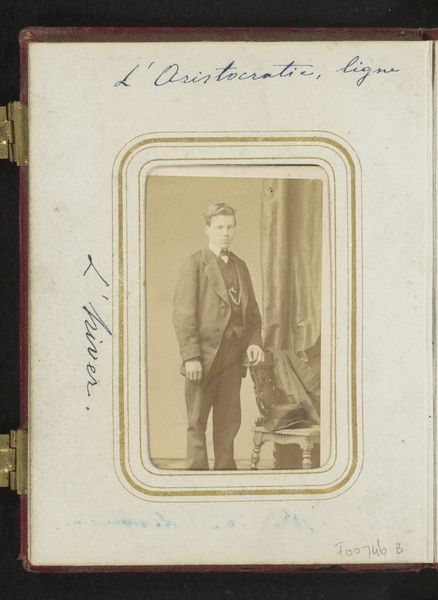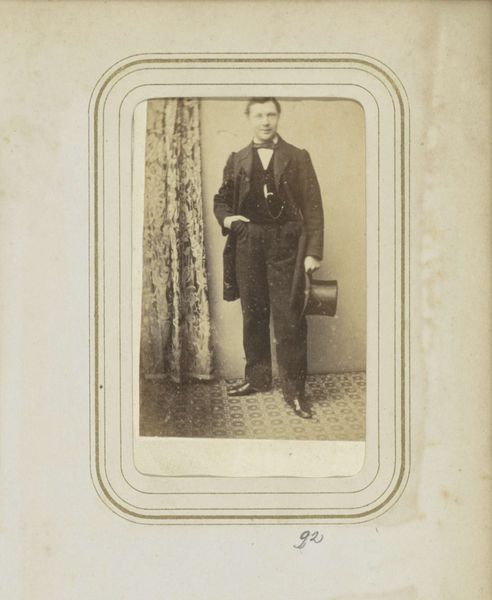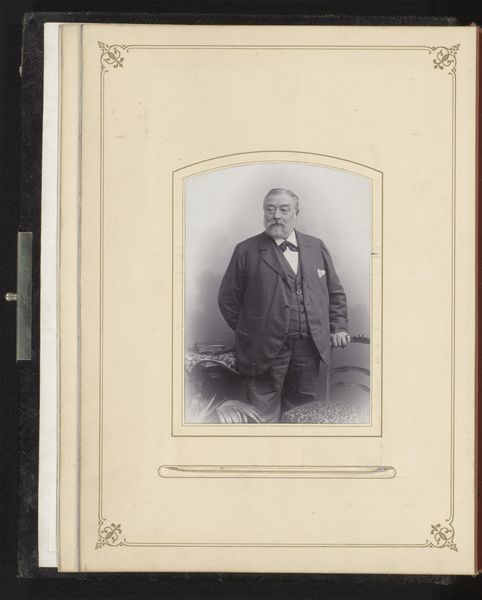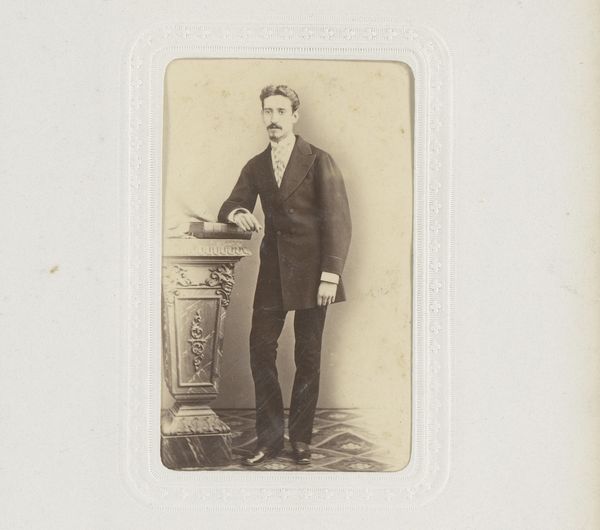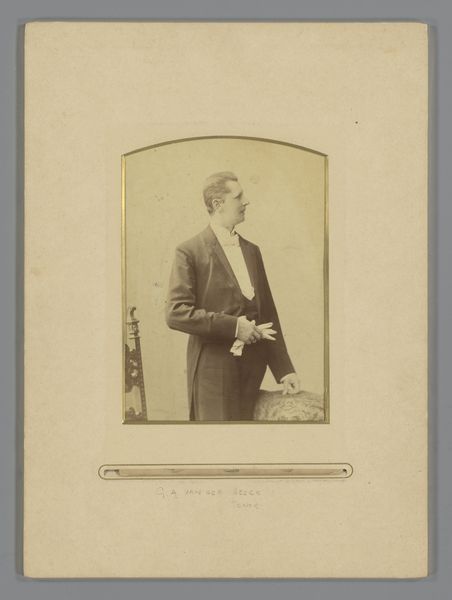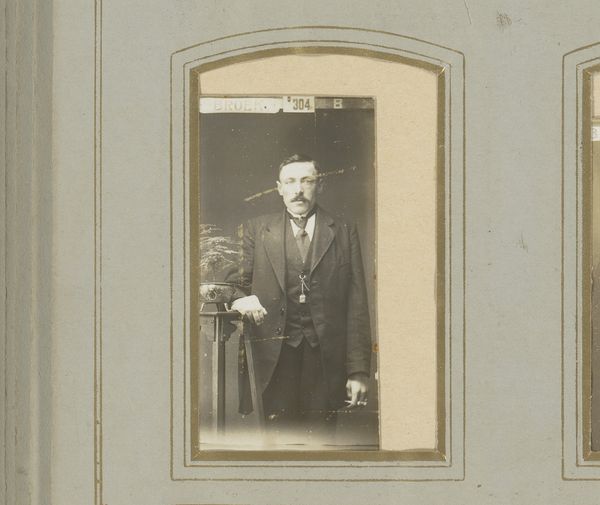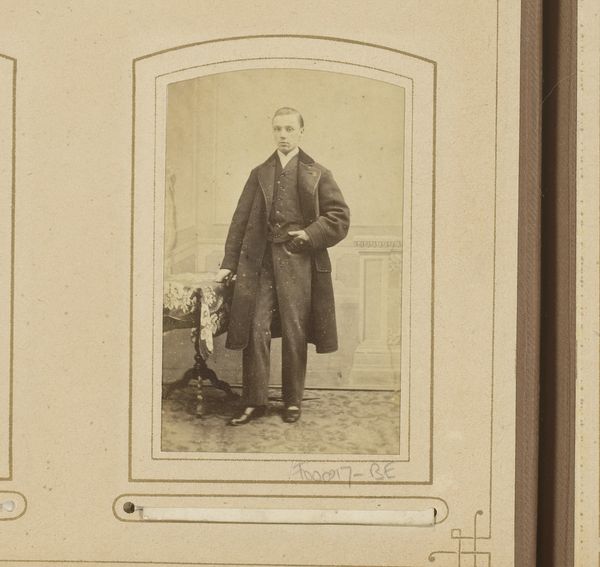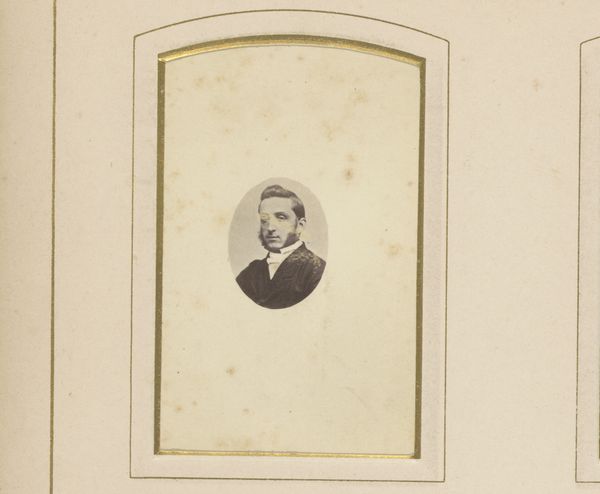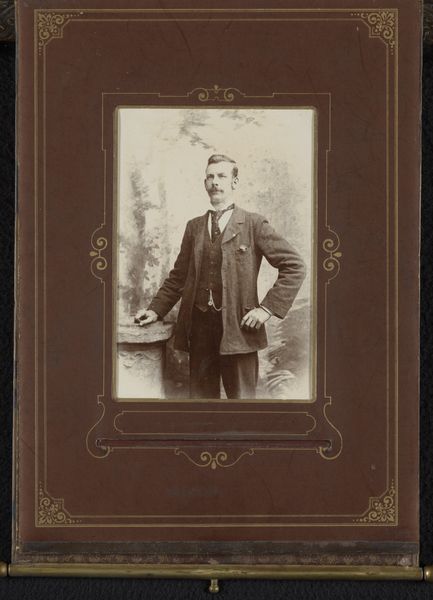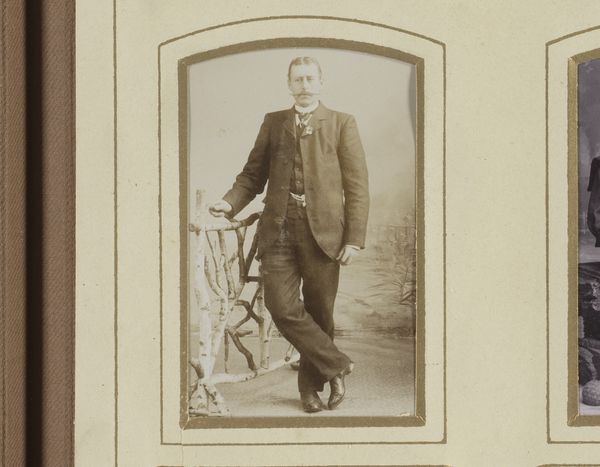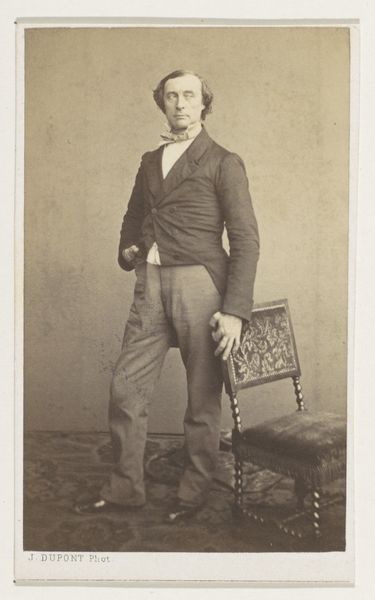
#
beige
#
aged paper
#
toned paper
#
vintage
#
photo restoration
#
colourisation
#
archive photography
#
historical photography
#
watercolor
#
historical font
Dimensions: height 84 mm, width 51 mm
Copyright: Rijks Museum: Open Domain
Curator: This albumen print captures the image of a man named Frans R. Boom, crafted sometime between 1880 and 1917 by Johannes Georg Jacobus van Arum. The toned paper and watercolor give it a delicate feel. Editor: He looks almost theatrical, doesn't he? Leaning casually with his cane, like he's about to deliver a dramatic monologue. A striking air of understated elegance despite the faded textures. Curator: The cane functions almost like a scepter here, lending a feeling of dignity and control appropriate to a member of the bourgeoisie. It echoes traditional portraiture elements where stance and objects were used to convey status. Editor: The historical context is crucial. This was a period of great social change; the rise of the middle class meant commissioning portraits wasn't just for the aristocracy anymore. Was photography beginning to democratize image-making? Curator: Exactly! And Boom's portrait fits right in. He is well-dressed, self-assured; he presents an idealised image of bourgeois masculinity. His suit is not overtly flamboyant, but speaks volumes about his economic status, conforming to specific norms that would not have been accessible for those working in other fields or who were of a lower status in society. Editor: And look at the floral decoration on his lapel – seemingly subtle, but likely carefully chosen for its symbolic meaning. Roses signified love, perhaps? Or some other encoded message? Also consider what these portraits meant to families – tangible reminders connecting them to past generations and validating familial importance. Curator: The floral touch, though muted by time and artistic interpretation, provides a layer of romanticism, tempering the rigid formality usually associated with such portraits. Flowers are often used to remind the viewers that they are transient and will not remain as the same. Editor: It serves as a quiet but forceful declaration – evidence that individuals throughout the period's tumultuous political changes sought permanence in self-image. In our contemporary, image-saturated world, one might pause to wonder about the profound meanings and intentions underpinning historic portraiture and the lives and expectations of the depicted individual. Curator: This glimpse offers much, doesn’t it? It really captures an echo of someone striving to secure his legacy through available means, offering us a tangible record for exploring. Editor: Indeed; it certainly reminds us to slow down and appreciate not only what we see at face value but also understand its place within the larger continuum of personal and social stories conveyed across eras and by a growing accessibility for everyday people.
Comments
No comments
Be the first to comment and join the conversation on the ultimate creative platform.
